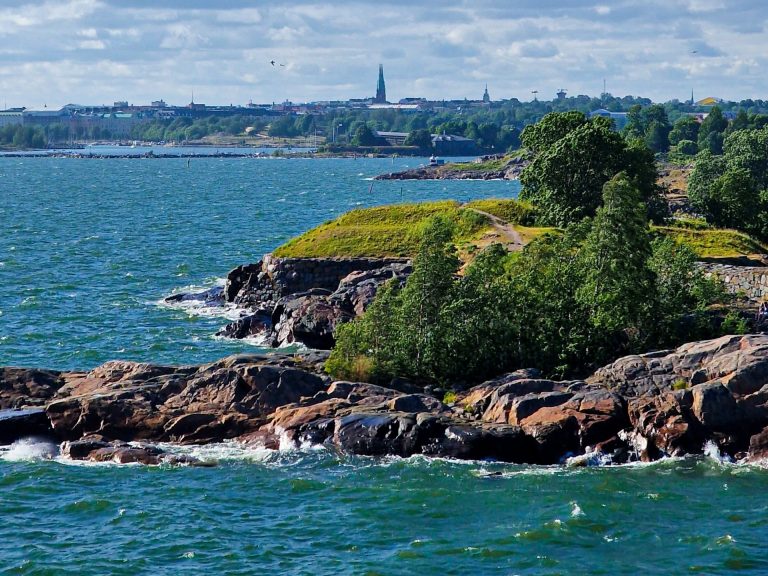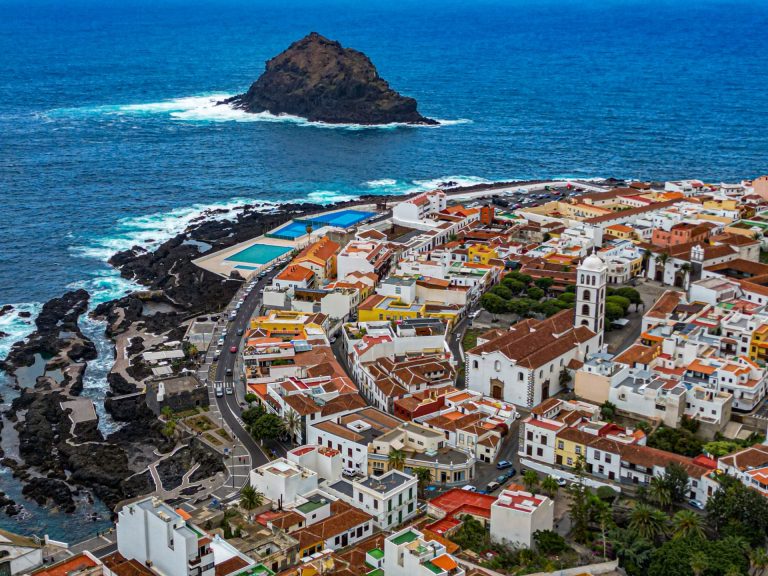
The darkness and cold of winter can easily stir up a longing for the warmth of the sun. Many of us may be wondering where it would be pleasantly warm, offering an escape from the gloomy and chilly weather at home.
If you’re looking for warmth and prefer staying within Europe, then the Canary Islands are the place to go. A long-time favorite among Finns, the Canary Islands offer the most reliable warmth in the middle of winter, with over 320 days of sunshine a year.
Throughout the winter, temperatures on the Canary Islands stay around 20°C, with the sea maintaining a similar temperature. The islands’ climate makes it possible to enjoy real heat, lounge on the beach, and swim in the sea even in the depths of winter.
Guaranteed Sun on Gran Canaria
If you want to maximize your sunshine even within the Canary Islands, the most reliable sun can be found on Gran Canaria, especially in the southern part of the island around Puerto Rico, from Puerto de Mogán to Arguineguín. This area boasts the most sunshine and excellent chances for warm weather.
On Gran Canaria, it’s easy to spend your holiday relaxing in the warmth of the sun, but if you’re looking for more, the island offers plenty to see. It’s much more than just a cliché destination for tourists sporting fanny packs.



What to See and Do on Gran Canaria
Gran Canaria offers enough sights to fill a week or even two. Here are a few highlights you shouldn’t miss:
Pico de Las Nieves – The highest point on Gran Canaria, standing at 1,949 meters. Be sure to bring warm clothes, as it can be quite chilly up there due to the altitude and wind, even if it’s hot on the beach.
Roque Nublo – An 80-meter-tall rock formation, one of the island’s most famous landmarks.
Maspalomas Dunes – Walking on these vast sand dunes feels like being in the Sahara. Trekking across the soft dunes is great exercise. Be prepared to protect your face, as a windy day can turn into quite the sandblasting experience.
Rugged cliffs on the island’s western coast – Dramatic and majestic cliffs plunge directly into the sea, with sharp peaks creating a striking landscape.
Puerto de Mogán – A charming small harbor town, often referred to as the “Venice of the Canary Islands.” It’s a wonderfully atmospheric place.
You can read more about the sights of Gran Canaria in this post: Gran Canaria Sights

Chasing the Sun in Mainland Europe
The warmest and sunniest place in mainland Europe during winter is the area around Málaga on Spain’s Costa del Sol. Like the Canary Islands, the Costa del Sol enjoys over 300 days of sunshine a year, and on the best days, winter temperatures can reach between 20°C and 25°C, offering a pleasant break from the cold. However, to avoid disappointment and packing only shorts and t-shirts, it’s more realistic to expect temperatures between 15°C and 20°C during the winter months, with cooler evenings, so it’s better to pack some warmer clothes as well.
There’s plenty to see along the Costa del Sol, and tourism is lower during the winter, allowing for a more peaceful exploration than during the summer peak season.
Choose the Right Destination and Explore the Surroundings
Thanks to the good public transport system, it’s easy to get around the Costa del Sol. The local train connecting coastal towns makes it convenient to explore different cities. Popular destinations include Málaga, which has much to offer in terms of beautiful historic buildings, art, and a generally pleasant city atmosphere. Málaga also boasts excellent shopping opportunities.
Other popular spots along the Costa del Sol include Fuengirola, well known to Finns, Marbella, Torremolinos, Benalmádena, and the white-washed village of Mijas Pueblo nestled in the mountainside.



Here are some excellent day-trip options in the area
Ronda – A city perched on the edge of a dramatic cliff, with a stunning 18th-century bridge connecting its old and new parts. Ronda offers breathtaking views and is highly recommended for a day or two.
Estepona – A thoroughly charming town known for its beautiful flower displays. Besides wandering the lovely old town, be sure to stroll along the pleasant beachfront promenade.
Caminito del Rey – A stunning hiking route along the cliffside. Once considered one of the world’s most dangerous paths, it has been fully restored (opened in 2015) and is now very safe, making it accessible to almost everyone, provided you can handle the 7km route.
Gibraltar – A slice of Britain in Spain. With its iconic red phone booths and views from the Rock of Gibraltar, along with its famous monkeys, you’ll almost forget you’re in Spain. From Gibraltar, you can easily see across the Mediterranean to Morocco in Africa. It’s about a two-hour drive from Málaga to Gibraltar. If you’re driving a rental car, check whether you can cross the border by car, and don’t forget to bring your passport!
Granada – Best known for the magnificent Alhambra Palace, which alone is worth a visit to Granada. The city is about a 1.5-hour drive from Málaga.
You can find more posts about the Costa del Sol and other parts of Spain here
In conclusion, the warmest place in Europe during winter is in Spain, where both the Canary Islands and the Costa del Sol offer ideal getaways from the cold. It’s no wonder that many Finns choose to spend their winters under the Spanish sun.
Related posts:
- Attractions in Gran Canaria
- Sights of Barcelona – Gaudí and Urban Vibes
- Fuengirola – The Costa del Sol, Spain
- Malaga Sightseeing and Activities – Costa del Sol, Spain
- Flower Blossoms in Estepona – Costa del Sol, Spain
- Faliraki & Old Town Rhodes – Rhodes, Greece
- Torremolinos – The Costa del Sol, Spain
- Crystal Clear Makarska Riviera, Croatia
- Ayia Napa, Cyprus – Beach Holiday in April
- Tenerife: North or South – Which Side Should You Stay On?








